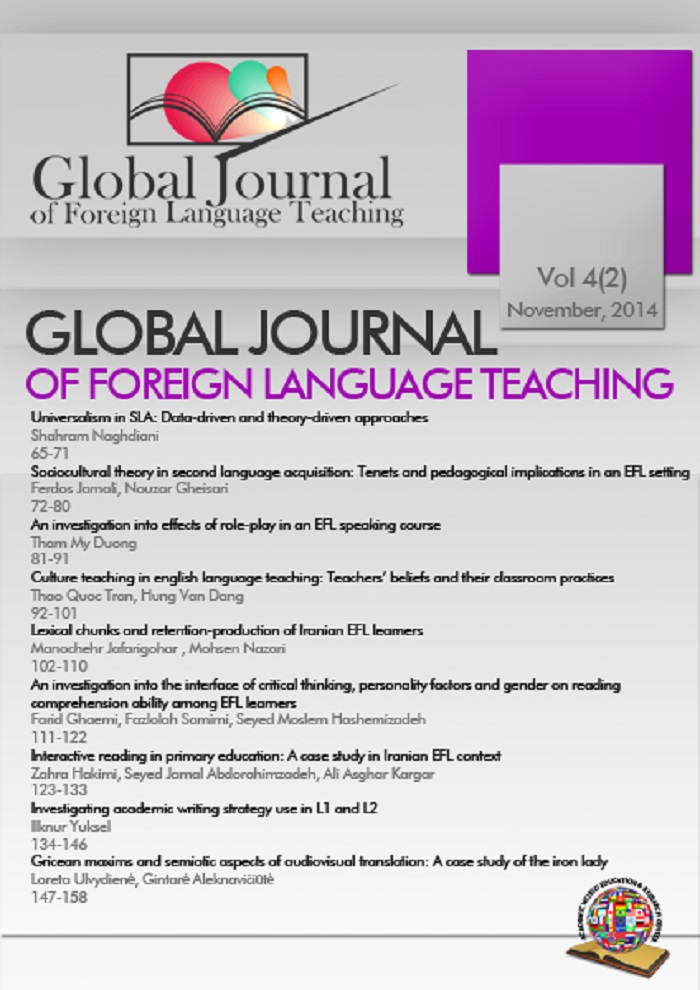Gricean maxims and semiotic aspects of audiovisual translation: A case study of the iron lady
Gricean maxims and semiotic aspects of audiovisual translation: A case study of the iron lady
Author(s): Loreta Ulvydienė, Gintarė AleknavičiūtėSubject(s): Education, Semiotics / Semiology, Media studies, Translation Studies
Published by: Birlesik Dunya Yenilik Arastirma ve Yayincilik Merkezi
Keywords: Audiovisual Translation; subtitling, Semiotics; Intrasemiotic Translation; Intercultural Translation;
Summary/Abstract: With the ever-increasing entertainment value of feature films and the enormous profit film industry generates, the need to transfer them to other countries and, therefore, other languages arises.Audiovisual Translation (AVT) as a practice, thus, becomes the main medium to do so, and feature films as acts of communication are being translated in tremendous numbers. The theoretical framework of audiovisual translation, however, is only beginning to shape. Subtitling is virtually the most unique type of audiovisual translation since the message is represented in written form on screen leaving the original soundtrack/dialogue undisturbed, yet imposing time and space constraints on the written representation of the dialogue. Audiovisual translation in general and subtitling in particular are in nature semiotic processes, i.e. films (as any other audiovisual material) involve two semiotic channels – verbal and nonverbal. On the basis of this, subtitling is the only type of audiovisual translation that is intrasemiotic in nature yet involves two verbal channels different in nature, i.e. spoken and written. This implies that communication has to undergo inevitable change and reduction due to the different nature of the two verbal semiotic channels, which means that there are principles that operate in this communicative process.
Journal: Global Journal of Foreign Language Teaching
- Issue Year: 4/2014
- Issue No: 2
- Page Range: 147-158
- Page Count: 12
- Language: English

